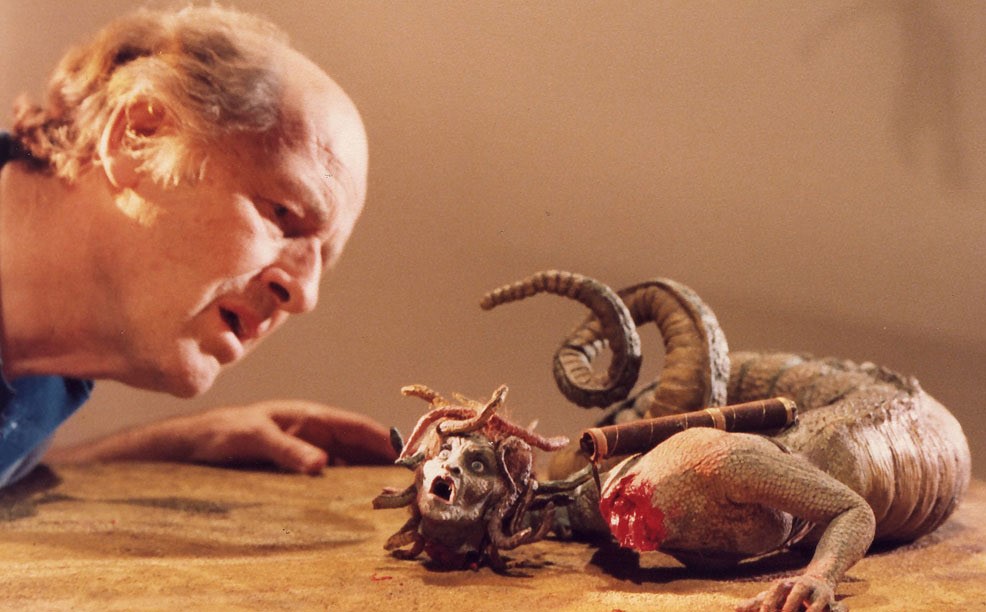“I had to learn to do everything because I couldn’t find another kindred soul. Now you see eighty people listed doing the same things I was doing by myself.”
-Ray Harryhausen
Though you might need to be something of a trivia buff to recognize the name, Ray Harryhausen is one of the all-time most influential figures in film. He was been cited as an inspiration to directors Steven Spielberg, George Lucas, Peter Jackson, James Cameron, Tim Burton, and Sam Raimi, among many others. Yet Harryhausen himself never appeared on the screen.
What we saw were the small sculptures Harryhausen brought to life by painstakingly changing their positions and filming them one frame at a time. Run through a film projector, this made what was really a series of still photographs seem to move. This process is called stop motion animation.
Harryhausen’s career spanned 50 years, and included such genre classics as The 7th Voyage of Sinbad, The Beast from 20,000 Fathoms, and the original Clash of the Titans. At least at first, Harryhausen movies were also a cottage industry family business. His mother would sew outfits for his little models, and his father machined the metal armatures used to give the figures both stability and motion.
A New Yorker article written after Harryhausen passed away in 2013 contains some hits and misses regarding the special effects artist. “Harryhausen and the Expressively Imperfect World” by Adam Gopnik captures something of the mystery of the filmmaker, but is too pat in its Postmodern self-regard.
Gopnik wrote, “Though who—at least among those who saw her at an impressionable age—can forget the snake woman who emerges, Play-Doh body writhing serpentinely, before the Sultan’s court—and is met by carefully directed gazes of awe and wonder and cries of ‘Allah, be praised!’ on the part of extras who are, rather obviously, looking at nothing.”
Gopnik undermines the nostalgic awe by pointing out that of course HE knows that it’s just a campy movie and that a sense of wonder is just kid stuff. It wouldn’t be so off-putting if various mass media types didn’t live their entire lives that way, and insist on telling the rest of us about it constantly.
Some people think picking apart the presentation is the fun part; not to better appreciate the artistry, but to try to out-analyze someone who is actually accomplishing something. That sort of thing is only fun for deconstructivists who are most skillful in prideful nagging.
But in the heart of the article, Gopnik gets it right in the following quote:
“For, deeper still, in some primal part of us, there is always a vital role for the not-too-perfect in our pleasures. Imperfection is essential to art. In music, the vibrato we love involves not quite landing directly on the note; the rubato singers cultivate involves not quite keeping to the beat. What really moves us in art may be what really moves us in The 7th Voyage of Sinbad: the vital sign of a human hand, in all its broken and just-unsteady…


